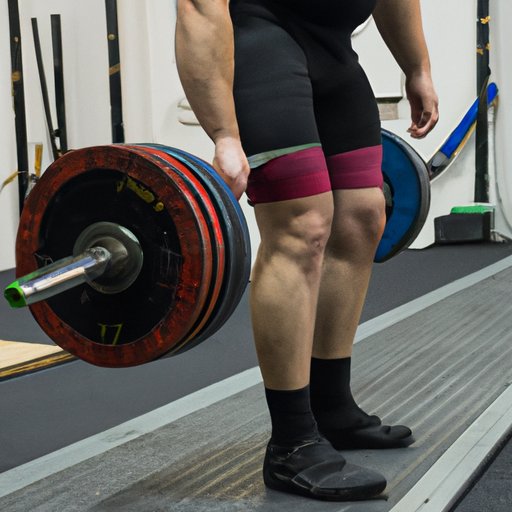
How to Do a Deadlift: The Ultimate Beginner’s Guide
Deadlift is one of the most popular and effective exercises for building strength in the lower body, core, and back. However, many beginners struggle with learning how to perform this exercise with proper form. In this comprehensive guide, we will provide a step-by-step guide that can help beginners perform the exercise correctly. We will also cover different variations of the deadlift, how to target specific muscle groups, how to increase the weight lifted, preparing for a competition, and addressing common questions and myths about deadlifts.
Step-by-Step Guide
The first step in performing a deadlift correctly is proper setup. Stand with your feet shoulder-width apart, with your shins a few inches from the bar. Place your hands on the bar just outside your legs. Keep your back straight, your chest up, and your shoulders relaxed. Take a deep breath and brace your core muscles.
Next, lift the bar by straightening your legs, making sure to keep your back straight. You should feel the tension in your glutes and hamstrings. Once the bar passes your knees, begin to engage your back muscles and pull your shoulders back and down. Straighten your torso and squeeze your glutes at the top of the lift. Lower the bar in a controlled manner back to the floor. Repeat for the desired number of repetitions.
One common mistake to avoid is rounding your back. Doing so can put undue strain on your lower back and cause injury. Ensure that your back is straight throughout the lift and engage your core muscles to assist with stabilization.
For beginners, it is essential to start with light weights and gradually increase weight as strength and form improve. It’s also essential to take regular breaks and stretch between sets to help prevent injury and reduce soreness.
Different Variations
There are several different variations of the deadlift, including conventional, sumo, and trap bar deadlifts. Each variation places emphasis on different muscle groups and can be suited to specific body types and goals.
The conventional deadlift is the most common variation and emphasizes the lower back, glutes, and hamstrings. The sumo deadlift is ideal for those with shorter legs and longer torsos and places more emphasis on the quads and glutes. The trap bar deadlift provides a more natural grip, making it suitable for those with poor grip strength, while still targeting the lower body muscles.
The setup and execution of each variation are slightly different, and it’s important to use proper form for each variation to prevent injury and maximize results.
Targeting Specific Muscle Groups
The deadlift is a compound exercise that targets multiple muscle groups simultaneously. The primary muscles worked are the legs, glutes, core, and back.
To maximize activation of these muscles, it’s important to maintain proper form throughout the exercise. Ensure that your back is straight, chest up, and core engaged. Focus on pushing through your heels and squeezing your glutes at the top of the lift. For targeting specific muscle groups, adjusting the stance and grip can also help.
How to Increase the Weight Lifted
Increasing the weight lifted during a deadlift requires a combination of improving technique, building strength, and avoiding injury.
Proper technique is essential to lifting more weight. Strengthening specific muscle groups such as the glutes, legs, and back can help build strength and improve overall technique. It’s also essential to avoid injury by taking regular breaks, stretching, and getting adequate rest between workouts.
Preparing for a Competition
Preparing for a deadlift competition requires a specific training plan that targets strength, speed, and endurance. Diet also plays an essential role in preparing for a competition, and it’s important to ensure that nutritional requirements are met. Mental conditioning is also crucial, as it helps to build confidence and focus.
Common Questions and Myths
One common myth about deadlifts is that they are not suitable for women. This is entirely untrue, and women can benefit just as much from deadlifts as men. Another myth is that deadlifts are dangerous and can cause injury. While this is true if performed incorrectly, proper form and technique can significantly reduce the risk of injury.
Conclusion
Deadlifts are a highly effective exercise and should be an essential part of any strength training program. In this ultimate beginner’s guide, we have covered how to perform the exercise with proper form, different variations of the deadlift, targeting specific muscle groups, how to increase the weight lifted, preparing for a competition, and addressed common questions and myths about deadlifts. We hope this guide has provided useful information and encourages you to try deadlifting with confidence that you understand how to execute the exercise correctly.





